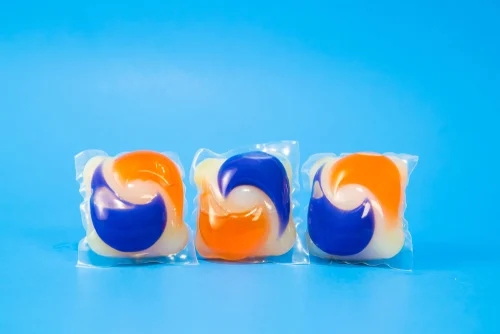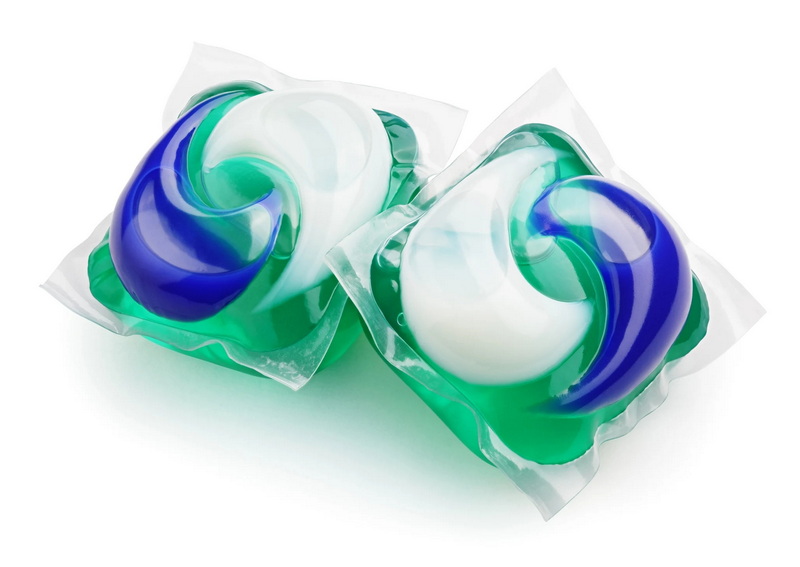Dongguan UFine Daily Chemical Co.,Ltd.
- All
- Product Name
- Product Keyword
- Product Model
- Product Summary
- Product Description
- Multi Field Search
Views: 222 Author: Tomorrow Publish Time: 10-16-2025 Origin: Site











Content Menu
● Why Do People Eat Laundry Pods?
● Health Risks Associated With Eating Laundry Pods
>> Immediate Physical Reactions
● Has Anyone Died Eating Laundry Pods?
● Data From Poison Control Centers
● Prevention and Safety Measures
>> For Households with Children
>> Packaging and Industry Initiatives
● What to Do in Case of Ingestion
● Medical Treatment for Laundry Pod Ingestion
● Legal and Regulatory Responses
● Psychological and Social Impact
● Future Directions in Laundry Pod Safety
● FAQ
>> 1. What makes laundry pods dangerous to eat?
>> 2. Are children the main group at risk of eating laundry pods?
>> 3. Have there been confirmed deaths from eating laundry pods?
>> 4. What should I do if someone swallows a laundry pod?
>> 5. How can I prevent accidental ingestion of laundry pods?
Laundry pods have become a popular household cleaning product due to their convenience and efficiency. Encapsulated with concentrated detergent, these small, colorful packets are designed to dissolve in water during a wash cycle. Despite their ease of use, laundry pods present significant risks if consumed accidentally or intentionally. This article explores the dangers associated with ingestion of laundry pods, including whether any deaths have occurred from eating them, the medical consequences, and prevention measures.

Laundry pods, also known as detergent capsules or packets, are pre-measured doses of concentrated laundry detergent encased in a dissolvable plastic film. The design aims to eliminate measuring errors and reduce spillage. The exterior dissolves when it comes into contact with water, releasing the cleaning agents inside.
These pods contain a mixture of chemicals such as surfactants, enzymes, bleach, and fragrances. While effective for cleaning clothes, these chemicals can be harmful if ingested because they irritate or damage internal organs.
The ingestion of laundry pods can be accidental or intentional:
- Accidental ingestion by children: Colorful packaging and sweet-smelling pods attract young children, who may mistake them for candy or toys.
- Intentional ingestion by teenagers and adults: In some cases, especially during the "Tide Pod Challenge" social media trend, teenagers ingested pods deliberately as a prank or dare.
- Mental health issues and substance abuse: Some adults with psychiatric disorders or those attempting self-harm have consumed laundry pods intentionally.
When consumed, laundry pods pose serious health threats due to the highly concentrated detergent. The effects can range from mild irritation to life-threatening injuries.
- Mouth and throat irritation: The chemicals cause burning sensations, swelling, and pain.
- Difficulty breathing: Chemical fumes may affect the airways, causing respiratory distress.
- Nausea, vomiting, and diarrhea: Gastrointestinal distress is common after ingestion.
- Abdominal pain: Irritation and chemical burns can cause severe pain.
- Eye and skin irritation: Leakage from pods can cause burns to skin or eyes on contact.
- Chemical pneumonitis: If detergent enters the lungs during vomiting or aspiration, it can cause inflammation and damage to lung tissue.
- Surgical emergencies: Perforation or severe burns to the esophagus or stomach may require surgery.
- Neurological effects: Severe poisoning can cause confusion, lethargy, or seizures.
- Death: Although rare, fatal outcomes have been reported, especially in cases with large ingestion or delayed treatment.
There have been documented cases of deaths linked to ingestion of laundry pods. These fatalities typically involve severe complications such as aspiration pneumonia, extensive chemical burns, or multi-organ failure.
For example, in 2018, a few isolated fatal cases were reported worldwide, primarily involving young children or adults who ingested multiple pods. The majority of these deaths occurred when prompt medical attention was not received or when aspiration of chemicals caused irreversible lung damage.
Health authorities and poison control centers worldwide continue to monitor these incidents to better understand risk factors and inform prevention strategies. Despite media attention around such fatalities, they remain extremely rare compared to the millions of pod uses each year.
Evidence from poison control centers highlights the dangers:
- Thousands of calls annually report exposure to laundry pods, primarily involving children under age five.
- Most cases result in mild symptoms; however, some require hospital admission.
- Fatalities, while extremely rare compared to exposure numbers, underscore the potency of the chemicals.
The American Association of Poison Control Centers (AAPCC) tracks laundry pod exposures and reports that the majority of poisonings occur in toddlers. The data also reveals that although most children recover with minor treatment, some require critical care for airway or digestive tract injuries.
To minimize the risks of ingestion, several precautions are recommended:
- Store laundry pods out of reach and sight of children, preferably in locked cabinets.
- Keep pods in their original packaging with child-resistant caps.
- Educate children on the dangers and discourage playing with laundry pods.
- Be vigilant about supervision during laundry tasks.
- Never leave pods unattended where children can access them.
- Know the emergency contact number for poison control.
Laundry manufacturers have made changes to reduce hazards:
- Introducing opaque packaging to reduce visual appeal.
- Adding bittering agents to deter ingestion.
- Supporting public education campaigns about pod safety.

If someone eats a laundry pod, immediate action is critical:
- Do not induce vomiting unless instructed by medical professionals.
- Rinse mouth thoroughly with water.
- Seek emergency medical care immediately.
- Call poison control for specific advice based on the person's condition.
Prompt treatment can reduce the risk of complications and improve outcomes.
Treatment depends on severity and symptoms:
- Airway management: Oxygen, intubation, or ventilation may be required if breathing is impaired.
- Gastrointestinal care: Endoscopy might be necessary to assess burns or lesions.
- Supportive care: IV fluids, pain management, and respiratory support.
- Monitoring: Patients are observed for delayed complications like lung inflammation or internal injuries.
Hospitals with pediatric and toxicology experience handle these emergencies best.
Due to their risks, several countries have enacted regulations to:
- Improve packaging safety.
- Mandate warning labels.
- Restrict marketing that targets children.
These efforts have contributed to a decline in pod ingestion cases, yet vigilance remains necessary.
The "Tide Pod Challenge" highlighted a dangerous trend where teenagers deliberately consumed pods for social media attention. This challenge led to numerous poisonings and hospitalizations, increasing public awareness of the dangers.
Social media platforms and parents are working to prevent such trends by promoting education on the serious health risks involved.
Manufacturers and health authorities continue to explore innovations:
- Developing pods with less attractive colors and shapes.
- Enhancing toxic-safe chemical formulations.
- Improving public awareness and education campaigns.
- Advancing packaging technologies to prevent access.
Ongoing research aims to balance convenience with safety for all users.
Laundry pods pose a significant poisoning risk when ingested due to their concentrated chemicals. Although accidental ingestion mostly affects young children and leads to mild to moderate symptoms, there have been rare cases of death, particularly in intentional ingestions or cases with complications. Prevention through secure storage, education, and safer packaging remains the best defense. Prompt medical attention is essential if ingestion occurs. Awareness and regulatory measures continue improving safety, but laundry pods must always be handled with caution and respect for their potential dangers.

Laundry pods contain concentrated chemicals like surfactants and enzymes that cause burns, respiratory distress, and organ damage when ingested.
Yes, toddlers and young children are the most common victims due to the pods' candy-like appearance and scent.
Yes, although rare, some fatalities have occurred due to severe chemical burns and lung damage following ingestion.
Rinse their mouth with water and seek immediate medical attention. Do not induce vomiting unless directed by a healthcare professional.
Store pods in locked cabinets or out of children's reach, keep them in original packaging, and educate family members about pod safety.